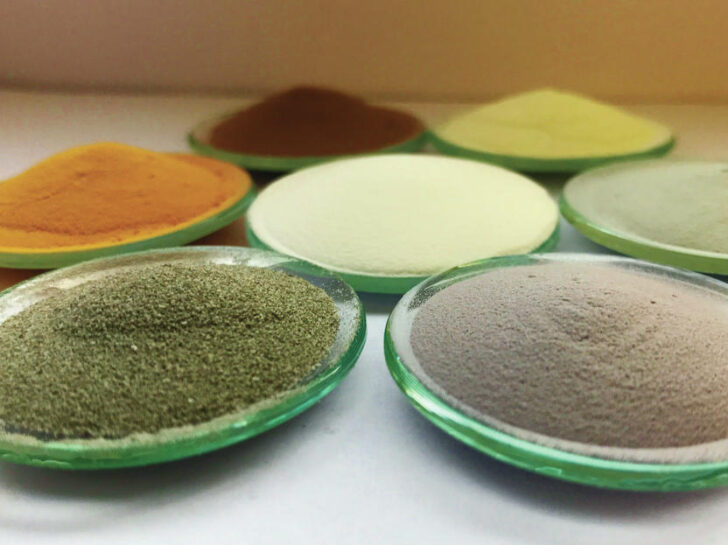3D laser printing in color for the first time

"Seasoned" with a pinch of nanosilver, home 3D printers can also print in color.
Aircraft cabin grilles, mascara brushes, and mascara components in cars: the industry has been using laser-based 3D printers for several years now when precision and good mechanical properties are required. However, the devices are expensive, large and print only white. At home, there are now desktop devices, but they can only print in black - until now. A team from the Center for Nanointegration (CENIDE) at UDE has now brought color into play.
The laser printers for the kitchen table are to become cheaper and smaller - and colorful: "Instead of the CO2 lasers commonly used in industry, we are using much cheaper diode lasers, such as those found in CD players with lower output," explains Dr. Bilal Gökce from Technical Chemistry I at UDE. "First of all, however, you have to do a bit of trickery. Because the usual powder polymer, the raw material for printing, is white. This means that it reflects all the wavelengths of visible light - unfortunately also those of diode lasers.
So the team had an idea to kill two birds with one stone: The scientists coated the powder granules with nanoparticles of silver. You need to know about this: In the tiny dimensions of a millionth of a millimeter, materials sometimes have surprising properties. For example, silver appears yellow, while nanogold is red to violet.
Concept transferable to other colors
The previously white polymer was now yellow, and in combination with a diode laser, whose radiation is absorbed particularly well by yellow objects, the idea worked: The result was the first laser-based 3D printing in color - read about it in the current issue of Advanced Optical Materials magazine, which selected the article for the cover.
"Because the nanoparticles are firmly attached to the surface of the powder grains and not just mixed in, even a pinch of them will produce a uniform color," says Gökce. And what works with silver also works with nanoparticles of other elements, so there are no limits to the colors in this process. As a kind of bonus, the particles have other characteristics, such as the antibacterial effect of silver or the magnetic properties of iron oxide.
Original article: Advanced Optical Materials – Plasmonic Seasoning: Giving Color to Desktop Laser 3D Printed Polymers by Highly Dispersed Nanoparticles
Source: Chemie.de – Erstmals 3D-Laserdruck in Farbe
Image source: © Gökce Chemie.de – Erstmals 3D-Laserdruck in Farbe